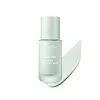What's inside
What's inside
 Key Ingredients
Key Ingredients

 Benefits
Benefits

 Concerns
Concerns

 Ingredients Side-by-side
Ingredients Side-by-side

Petrolatum
EmollientPolyglyceryl-2 Triisostearate
EmulsifyingDiisostearyl Malate
EmollientParaffinum Liquidum
EmollientJojoba Esters
EmollientHydrogenated Polyisobutene
EmollientPolyethylene
AbrasiveMeadowfoam Delta-Lactone
Skin ConditioningCholesteryl Hydroxystearate
EmollientHydrogenated Coco-Glycerides
EmollientEuphorbia Cerifera Wax
Microcrystalline Wax
Emulsion StabilisingMangifera Indica Seed Butter
Skin ConditioningCeresin
Emulsion StabilisingPrunus Amygdalus Dulcis Oil
Skin ConditioningTrihydroxystearin
Skin ConditioningPhenoxyethanol
PreservativeCaprylyl Glycol
EmollientTocopheryl Acetate
AntioxidantGlyceryl Caprylate
EmollientSimmondsia Chinensis Seed Oil
EmollientCamellia Japonica Seed Oil
EmollientParfum
MaskingTocopherol
AntioxidantTbhq
AntioxidantCymbopogon Schoenanthus Oil
MaskingWater
Skin ConditioningButylene Glycol
HumectantHoney Extract
HumectantEthylhexylglycerin
Skin ConditioningPetrolatum, Polyglyceryl-2 Triisostearate, Diisostearyl Malate, Paraffinum Liquidum, Jojoba Esters, Hydrogenated Polyisobutene, Polyethylene, Meadowfoam Delta-Lactone, Cholesteryl Hydroxystearate, Hydrogenated Coco-Glycerides, Euphorbia Cerifera Wax, Microcrystalline Wax, Mangifera Indica Seed Butter, Ceresin, Prunus Amygdalus Dulcis Oil, Trihydroxystearin, Phenoxyethanol, Caprylyl Glycol, Tocopheryl Acetate, Glyceryl Caprylate, Simmondsia Chinensis Seed Oil, Camellia Japonica Seed Oil, Parfum, Tocopherol, Tbhq, Cymbopogon Schoenanthus Oil, Water, Butylene Glycol, Honey Extract, Ethylhexylglycerin
Water
Skin ConditioningMethyl Trimethicone
Skin ConditioningEthylhexyl Methoxycinnamate
UV AbsorberDimethicone
EmollientCaprylyl Methicone
Skin ConditioningButylene Glycol
HumectantLauryl PEG-8 Dimethicone
CI 77891
Cosmetic ColorantTitanium Dioxide
Cosmetic ColorantPhenyl Trimethicone
Skin ConditioningTrimethylsiloxysilicate
EmollientNiacinamide
SmoothingZinc Oxide
Cosmetic ColorantMethyl Methacrylate Crosspolymer
Lauryl Polyglyceryl-3 Polydimethylsiloxyethyl Dimethicone
Skin ConditioningMica
Cosmetic ColorantCI 77007
Cosmetic ColorantSodium Chloride
MaskingVinyl Dimethicone/Methicone Silsesquioxane Crosspolymer
Disteardimonium Hectorite
Stabilising1,2-Hexanediol
Skin ConditioningDimethicone/Vinyl Dimethicone Crosspolymer
Skin ConditioningPolymethyl Methacrylate
Boron Nitride
AbsorbentHdi/Trimethylol Hexyllactone Crosspolymer
Aluminum Hydroxide
EmollientStearic Acid
CleansingCaprylyl Glycol
EmollientLimonene
PerfumingTriethoxycaprylylsilane
Allantoin
Skin ConditioningGlyceryl Caprylate
EmollientMethicone
EmollientDisodium EDTA
Propanediol
SolventSilica
AbrasiveCitrus Aurantium Dulcis Peel Oil
MaskingBHT
AntioxidantLinalool
PerfumingTocopherol
AntioxidantOryza Sativa Extract
AbsorbentWater, Methyl Trimethicone, Ethylhexyl Methoxycinnamate, Dimethicone, Caprylyl Methicone, Butylene Glycol, Lauryl PEG-8 Dimethicone, CI 77891, Titanium Dioxide, Phenyl Trimethicone, Trimethylsiloxysilicate, Niacinamide, Zinc Oxide, Methyl Methacrylate Crosspolymer, Lauryl Polyglyceryl-3 Polydimethylsiloxyethyl Dimethicone, Mica, CI 77007, Sodium Chloride, Vinyl Dimethicone/Methicone Silsesquioxane Crosspolymer, Disteardimonium Hectorite, 1,2-Hexanediol, Dimethicone/Vinyl Dimethicone Crosspolymer, Polymethyl Methacrylate, Boron Nitride, Hdi/Trimethylol Hexyllactone Crosspolymer, Aluminum Hydroxide, Stearic Acid, Caprylyl Glycol, Limonene, Triethoxycaprylylsilane, Allantoin, Glyceryl Caprylate, Methicone, Disodium EDTA, Propanediol, Silica, Citrus Aurantium Dulcis Peel Oil, BHT, Linalool, Tocopherol, Oryza Sativa Extract
 Reviews
Reviews

Ingredients Explained
These ingredients are found in both products.
Ingredients higher up in an ingredient list are typically present in a larger amount.
Butylene Glycol (or BG) is used within cosmetic products for a few different reasons:
Overall, Butylene Glycol is a safe and well-rounded ingredient that works well with other ingredients.
Though this ingredient works well with most skin types, some people with sensitive skin may experience a reaction such as allergic rashes, closed comedones, or itchiness.
Learn more about Butylene GlycolCaprylyl Glycol is a humectant and emollient, meaning it attracts and preserves moisture.
It is a common ingredient in many products, especially those designed to hydrate skin. The primary benefits are retaining moisture, skin softening, and promoting a healthy skin barrier.
Though Caprylyl Glycol is an alcohol derived from fatty acids, it is not the kind that can dry out skin.
This ingredient is also used as a preservative to extend the life of products. It has slight antimicrobial properties.
Learn more about Caprylyl GlycolGlyceryl Caprylate comes from glycerin and caprylic acid, a fatty acid from coconut. It has emollient and emulsifier properties.
As an emollient, it helps hydrate your skin. Emollients work by creating a barrier on your skin to trap moisture in, helping to keep your skin soft and smooth.
On the other hand, emulsifiers prevent ingredients (such as oil and water) from separating.
Learn more about Glyceryl CaprylateTocopherol (also known as Vitamin E) is a common antioxidant used to help protect the skin from free-radicals and strengthen the skin barrier. It's also fat soluble - this means our skin is great at absorbing it.
Vitamin E also helps keep your natural skin lipids healthy. Your lipid skin barrier naturally consists of lipids, ceramides, and fatty acids. Vitamin E offers extra protection for your skin’s lipid barrier, keeping your skin healthy and nourished.
Another benefit is a bit of UV protection. Vitamin E helps reduce the damage caused by UVB rays. (It should not replace your sunscreen). Combining it with Vitamin C can decrease sunburned cells and hyperpigmentation after UV exposure.
You might have noticed Vitamin E + C often paired together. This is because it is great at stabilizing Vitamin C. Using the two together helps increase the effectiveness of both ingredients.
There are often claims that Vitamin E can reduce/prevent scarring, but these claims haven't been confirmed by scientific research.
Learn more about TocopherolWater. It's the most common cosmetic ingredient of all. You'll usually see it at the top of ingredient lists, meaning that it makes up the largest part of the product.
So why is it so popular? Water most often acts as a solvent - this means that it helps dissolve other ingredients into the formulation.
You'll also recognize water as that liquid we all need to stay alive. If you see this, drink a glass of water. Stay hydrated!
Learn more about Water